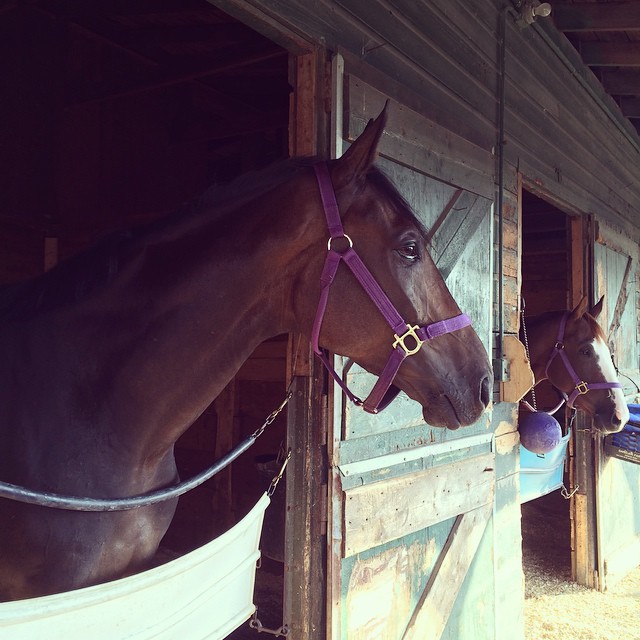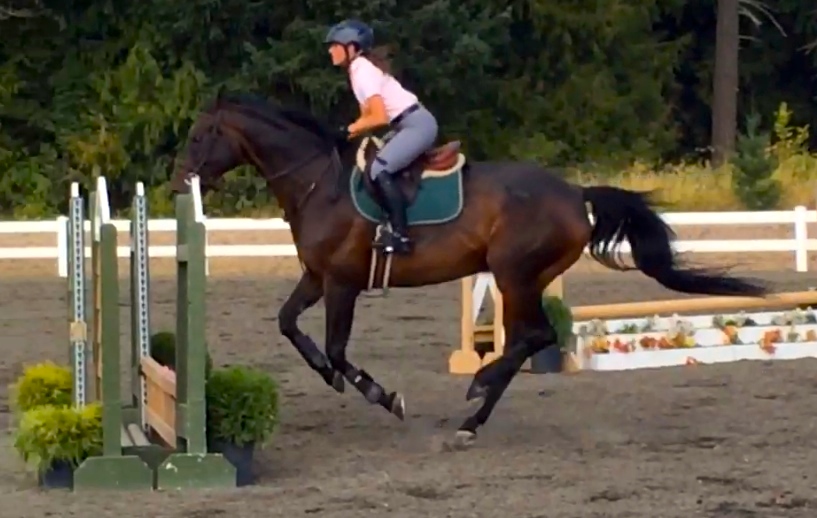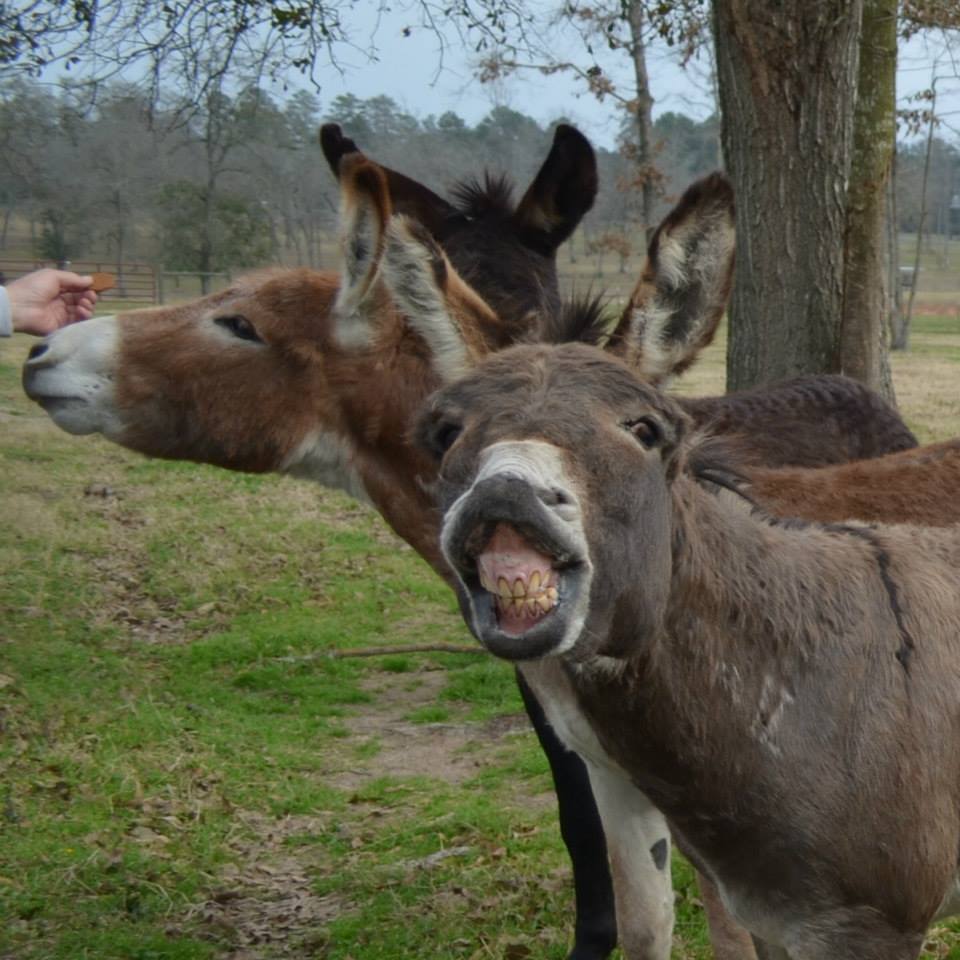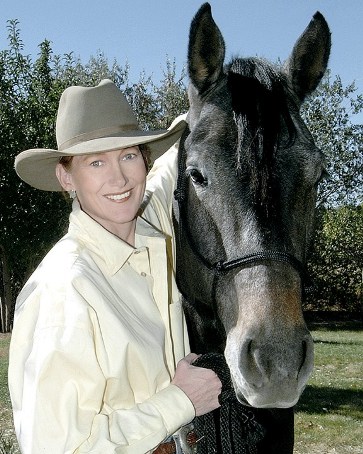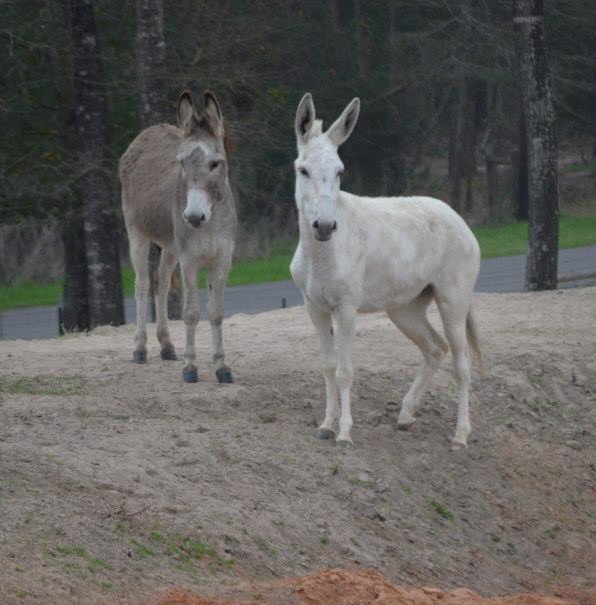
Longtime Boston-based Thoroughbred advocate Jennifer Montfort adopts a Suffolk Downs racehorse as an era ends, and the track closes.
After spending years helping others find their dream horse at Suffolk Downs, longtime horse advocate and volunteer Jennifer Montfort went for it last weekend: she bought a horse!
In horse country, a bold step like this may elicit a shrug or a comment like, “So what?” But, in Boston, Mass., where affordable stabling is about as hard to come by as affordable anything, Montfort decided to throw caution to the wind and purchase 4-year-old Caristo.
“It all happened very quickly,” Montfort says. “I first met Caristo last year when he was a new 3-year-old in John and Kathy Botty’s barn, and I immediately liked him. He’s very much my type of horse. I actually have a picture on Instagram from over a year ago with me saying that he was my new horsey boyfriend.”
Caristo
Sire: Langfhur
Dam: Gemilli, by Lemon Drop Kid
Foal date: March 23, 2010While visiting the gelding’s owners on Saturday, Montfort lamented that with the imminent and permanent closure of the 79-year-old racetrack, her dream to one day adopt a Suffolk horse would forever be just that; a dream. Montfort previously worked for years for CANTER New England, taking trainer listings and networking specifically to help Suffolk Downs horses find new homes. And as she discussed her disappointment with the Botty family, they chimed in, “What about Caristo?”
“I had to think about it. I haven’t owned a horse since I moved to Boston in 2006, so it’s a big deal to contemplate,” she says. “But, after a little bit of thought, and some very quick plan making, and a lot of enabling by my horsey friends—I thought it was probably the right time and the right horse.”
It seems the match was written in the stars and in his Jockey Club papers to boot.
Says Montfort, “I attended Sweet Briar College. And there are two names I saw when I first looked his pedigree up. They were: “Sweet Lady Briar” and “Sweet Briar Too.” How hilarious is that?”
Though disappointed that Suffolk Downs is closing due to losing out on a casino deal, which would have brought much-needed revenue to the struggling racetrack, she is thrilled to take a piece of Suffolk home with her.
“I’m devastated that the track is closing, but so happy to have a horse that was part of its history from people who have taken amazing care of him,” she says. “It’s nice to have a bright spot with the track closing, and I’m glad to be able to give a horse a home and a new job.
“The horses at Suffolk are so worthy of their happy endings and have been so lucky to have such a great supporter of TB aftercare in Suffolk Downs—it’s been so gratifying to see so many go on to great homes in my time there, and I’m honored to be a part of that with a horse of my own.” ♥
![]() Please consider visiting the blog’s new store, Off-Track Products. Proceeds will help sustain this blog in the future, and go to charity.
Please consider visiting the blog’s new store, Off-Track Products. Proceeds will help sustain this blog in the future, and go to charity.
